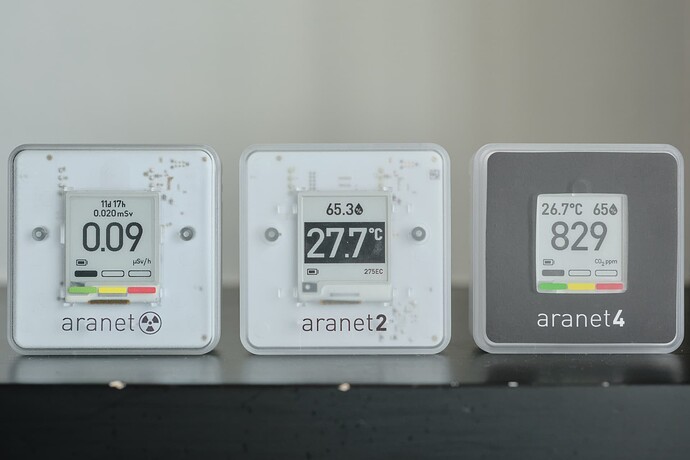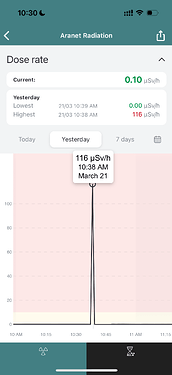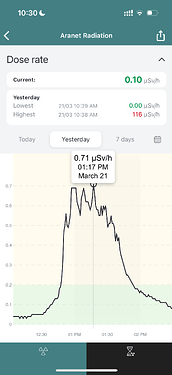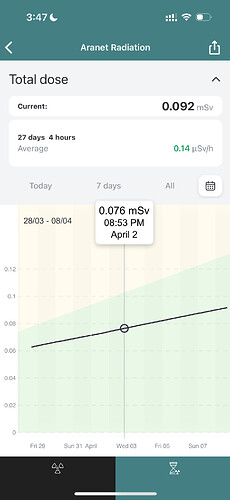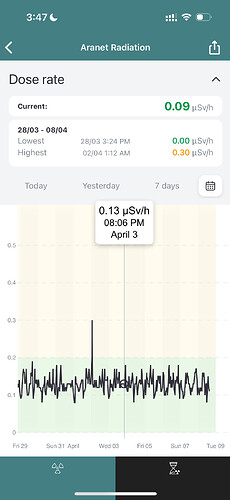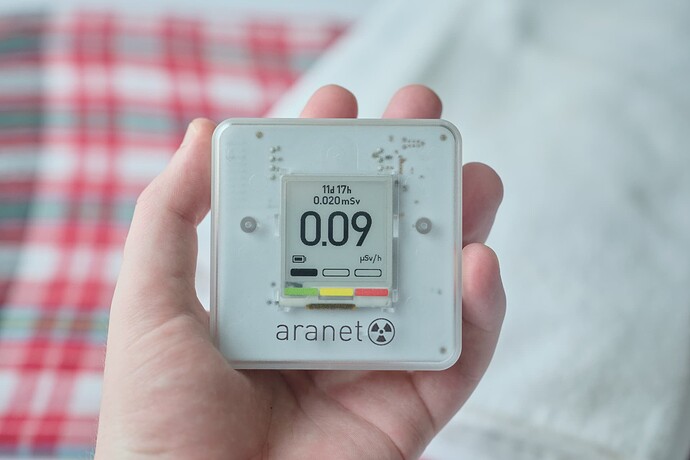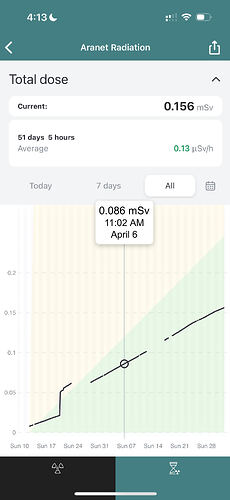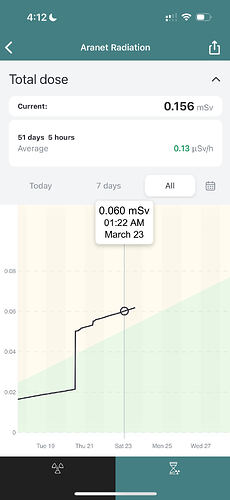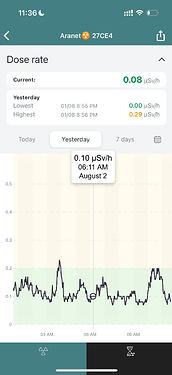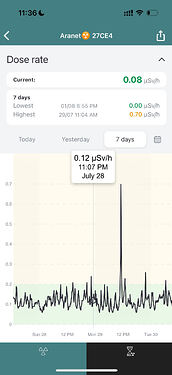If you would like to purchase any Aranet device, you can save 5% with the code BREATHESAFEARANET.
I’ve been a fan of the Aranet4 Home for years, and I have three of these monitors plus an Aranet2 in my collection. While they are more pricey than the competition, they are made to a high standard and usually use the highest quality components. However, one thing that many, including myself, have been waiting for is for the ecosystem to expand. Until recently, the only two devices in the ecosystem were the Aranet4 Home and the Aranet2 Home. Considering how many air quality monitors have multiple sensors inside and how many brands have more bases covered regarding the pollutants they measure, I’ve been holding out for a few more Aranet products - primarily some kind of PM sensor.
To my surprise, Aranet contacted me a few months ago to tell me of the upcoming release of a radiation sensor. While I wasn’t surprised to hear about them expanding their product range, a radiation sensor caught me by surprise. Even more surprising is that this ionising radiation sensor picks up gamma rays. It won’t detect radon (at least not directly) like many other air quality monitors, such as the Airthings View Plus. On a side note, I have heard that a radon sensor is also in the works, so it looks like Aranet intends to develop its range of sensors even further, giving me hope for a future PM1/PM2.5/PM4 sensor!
When I asked Aranet about how the monitor works, I was given this answer:
The Aranet Radiation uses a PIN diode to detect radiation. It has a protective layer, so it won’t react to visible light. This layer also blocks alpha particles, which typically have a short lifetime and can be easily blocked.
While it’s unrelated to air quality, I wanted to try the Aranet Radiation sensor because it fits well with the Aranet Home app, which I already use daily. Not being an expert on radiation, I was curious to keep the device on me and see what it had to report. After all, I’ve never monitored my gamma radiation exposure before, and it sounds like something I should be more aware of, considering the dangers!
Since I needed to take a flight, I put my Aranet Radiation sensor in my checked luggage. The first image above shows the radiation measured by the sensor as it went through the X-ray scanner, and the second image shows the radiation increase over time as the plane’s altitude increased and then decreased over a two-hour flight. As you can see, this could be a very useful tool for both pilots and cabin crew who fly very regularly as I’m sure this kind of exposure could have some health implications in the long term.
While the monitor shows you the dose rate (on the right), you can swap to see the total dose, which is your total exposure over the given period. Since I’m not too familiar with radiation and exposures, I’m not sure what these total dose rate thresholds are based on, but I assume they are scientifically backed. However, I will ask Aranet to be sure (or, if you know the answer, please let me know!).
On that note, if you want to read a bit more about using this monitor in real life and some of the science behind it, I recommend checking out this thread on Twitter/X: https://twitter.com/citlanx/status/1775638592590959032.
Regarding other aspects of the device, it’s almost identical to the Aranet4 Home and Aranet2 Home. While the device monitors something entirely different, it looks almost identical to the two other square E-ink devices and uses the same app. This has some perks, such as meaning it will fit the soon-to-be-announced cases from Aranet (Aranet4 Home Cases - #2 by Ethan), but it also means you shouldn’t expect anything revolutionary about this device’s design or connectivity. That said, connectivity has always been a strong point of the Aranet series of devices, and I am more than happy to continue using this app.
One notable difference between the Aranet Radiation sensor and the other devices in the series is that this device makes sounds, whether or not you have the buzzer enabled. Every minute (or however frequently you’ve set the interval). I guess this is required for the device to take readings, and either way, it’s not too bothersome as it’s infrequent (albeit high-pitched), and the interval can be adjusted.
Notably, this device also shares the fantastic multi-year battery life of the other monitors in the series - dependent, of course, on how frequently you set the monitor to take readings. While I would love to see an internal, rechargeable battery introduced at some point, I’m a fan of the incredible battery life and can’t complain here.
So, that concludes my first impressions of the Aranet Radiation sensor. While I have a lot more to share, I will leave that for the full review as I definitely need to do a lot more research to bring myself up to speed with exactly how the device works. In the meantime, if you have any questions, please ask them here, and I will do my best to answer them!
Also, if you want to purchase one of these monitors, you can get an added discount by using the code ‘BREATHESAFEAIR’ at checkout.
